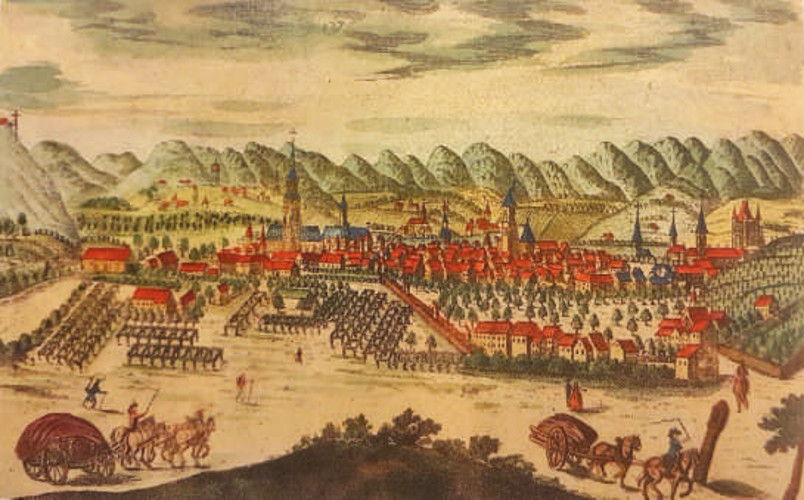Display board 9
TRADE, FAIRS AND SMUGGLING
The silk skeins produced in Rovereto during the C 17th and C 18th were very largely destined for the central European market. The Bolzano Fairs acted as intermediaries between the manufacturers of Rovereto and the buyers from the German territories who bought the skeins made and dyed in Rovereto and sent them on to cloth factories.
The fairs at Bolzano were of medieval origin and at first had two fixed dates: the Mid-Lent market in early spring and Saint Egidio on September 1st. To these two opportunities of exchange, two more fairs were added later, that of Corpus Christi at the beginning of summer and of Saint Andrew on November 30th. In the early C 16th the four fairs, each lasting 14 days, already alternated with a regular rhythm. At these markets the producers from Rovereto displayed their samples to possible purchasers and took their orders. On the basis of this they could programme their work for the following months. The commissioned products, once prepared, were delivered at the next fair.
Between 1740 and 1766 the number of trading houses grew from 12 to 23 and relations with other European nations intensified. At the height of the silk industry's development, which coincided with the middle of the C 18th, the Roveretan processed silks were being sent to almost all the German cities, Austria, Bohemia, Saxony, Silesia, Brandenburg, Switzerland, Prussia, Poland, Denmark, Sweden, Russia, Holland and England.
By the C 17th, since the raw silk of the entire Vallagarina was not sufficient to meet the high demand of local manufacturing, cocoons had to be brought in from the area round Verona, even via a flourishing smugglers' network.
SILK FLOWS ALONG THE RIVER
In the C 18th silk and goods generally were carried along fairly rough roads. The main route was the Roman road connecting Trento to Verona. This followed the ancient via Claudia Augusta, built by the Romans to link northern Italy with the Germanic world.
The most important commercial axis however was the River Adige. From Rovereto towards Bolzano goods were loaded onto Pescantina boats, which were drawn by horses and other draught animals along the left bank of the River Adige, while from Bolzano to Verona the various products were carried on rafts steered by the raftsmen of Sacco which descended the watercourse with the current, flowing South. In 1744 the Empress Maria Teresa conceded the monopoly of raft transport on the Adige to a single shipping company consisting of ten associated families of Sacco, in particular the Fedrigotti.
In the C 19th the construction of the Brennero railway line revolutionized the world of transport. In fact the rail line replaced the Adige, inexorably downgrading the whole river transport sector.
